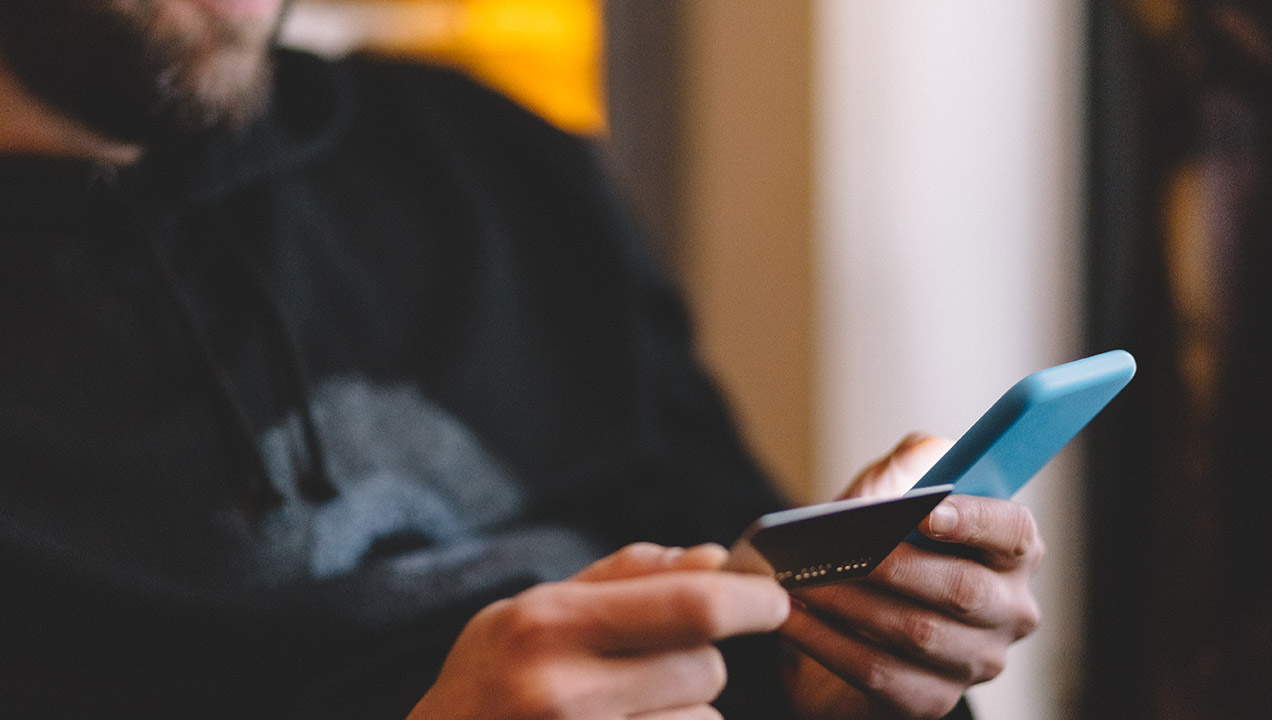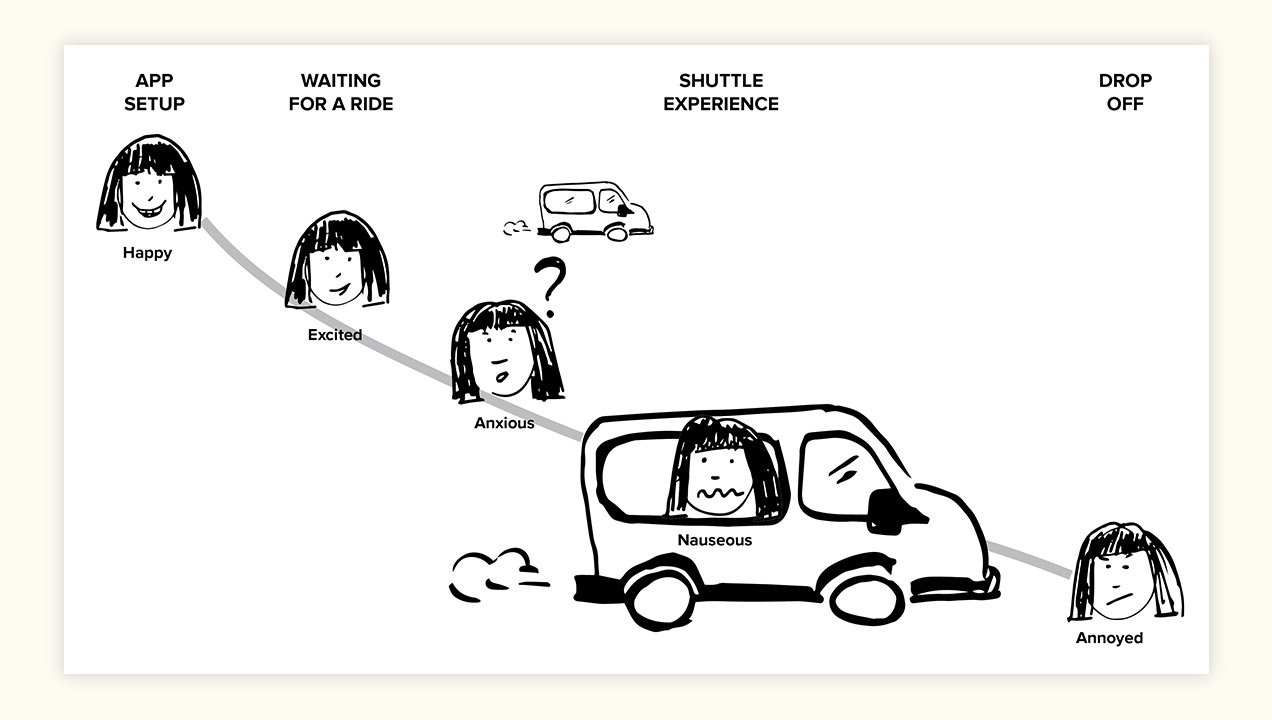Customer Journeys: Under promise, then over deliver
This seems like a given. Even as a jaded new user of the app-of-the-day, I’m constantly surprised by moments where potentially great experiences start breaking down. Two recent stories exactly illustrate the problem of over promising and then under delivering.
Trying out Chariot for the first time
One morning, I made a split second decision to try Chariot (an app enabled commuter shuttle service). Everything was going smoothly: the app downloaded in a jiffy, I was delighted that there was no need to enter any personal information, payment information, nor confirmation code. I was up and running with one text AND, I could try it free for a free week. Wow, great user experience so far — and the promise of worry free travel from A-to-B!
Then things started going downhill. I checked and rechecked my route. The app showed that the shuttle was delayed by 1 minute; the said shuttle zipped by me on the opposite side of the street, and I mentally recalculated the delay by another 5 minutes. Then, I saw the car icon turn around on my map, just to see it drive by me without stopping. The driver picked up two passengers at the corner of Haight and Masonic, half a block away from the pick up point indicated in the app. I sprinted down the street, and had the feeling I barely made it in time. Not trusting the time estimates, I couldn’t tell how many more stops there were. The driver stopped once, looking for a passenger. She inched up a block, looked harried, and waited. I wondered idly if she would have waited for me. A few seconds later the passenger jumped into the van, winded and panting heavily.
What started out as a really great initial encounter with a new product and brand fell short of its promise. I ended up hopping out of the shuttle 1 stop earlier, preferring to walk to the stifling shuttle stop-and-go experience. I tried to contact customer service chat on mobile to send in some quick feedback, and even that failed.
Trying out Uber in London at LHR
Last month I took a business trip to London. I arrived at LHR and needed to get to the office quickly. There was internet at the airport though I didn’t have cell service for some reason.
I thought to myself, “this is the perfect situation to try out Uber in a new country…I trust them enough that it would probably be faster than getting a cab”. I booked a car and the app navigated me into the second level of a parking garage. At pillar D, I waited for my car. I received a notification that my car had arrived, but I didn’t see it anywhere. I couldn’t contact my driver through the app; I could only contact him via cell service. I trusted Uber, but in a foreign country, that brand promise left me stewing in a regular cab, 1 hour late to my meeting.
This was a chance to delight that fell on its face. An experience that could have made me swear by the Uber experience, failed to deliver. Why did Uber allow me to book a car with no way of contacting the driver?
Set the right expectations, get the critical user journeys right
Users will forgive a lot if expectations are set right. In these two stories, both companies over promised on experience, which ended up poorer than their alternatives, a far cry from the vaunted promise of 10x improvement. Chariot’s set up and onboarding experience set high expectations toward the whole experience. Uber didn’t deliver in my “get me outta the airport use case” (which can’t be unique…right?), and I will hesitate to try them out in analogous situations in the future.
“Customer-experience leaders start with a differentiating purpose and focus on improving the most important customer journey first…To manage expectations, they design supporting processes with customer psychology in mind…savvy companies can design the sequence of interactions with customers to end on a positive note.”
Both of these stories show how easy it is to forget to consider the end-to-end customer journey in different usage scenarios.
So, who’s doing a great job right now?
Companies such as CapitalOne and American Express in the finance sector are doing a great job with delivering above and beyond customer experience.

I was pleasantly surprised when I reached out to CapitalOne’s customer support to ask for a replacement credit card. I logged into the website and reached out to chat support. The agent asked me to verify my information, and a side window popped up alongside my chat so that I could verify my personal details without giving my details to the agent.
During Thanksgiving break, I got an email in my inbox from CapitalOne, alerting me to a higher monthly charge from QuickBooks Online:
“Dear Shauna,
We noticed INTUIT *QB ONLINE charged you $12.95 this month. That’s $2.59 more than last month, so we want to make sure you know about it.
If that’s right — or if you’ve already addressed it — you’re good to go! There’s nothing you need to do.
Think it’s a mistake? Sign in to look at the charge in more detail.”
Tomasz Tunguz expresses a similar, positive, “customer experience of the future” with American Express fraud department. He’d been called by a bot to check on two suspicious looking transactions.
“Why did it feel so different than a traditional customer support call? First, because the bot on the other end of the line was on the same screen as I was. She instantly “knew” where I was clicking and what the right next step would be. She guided me at every turn. The robot understood the context, in contrast to a typical support call with requires several frustrating minutes to get on the same page as a customer service rep…I felt very well taken care of — cossetted and gratified — which is the hallmark of great service. Even if that customer service rep was a robot.”
These are examples of customer support experiences that deliver preemptive and positive experiences in situations where there was no expectation from the customer side. The result is delight and greater customer loyalty.
There’s a cadence and flow to customer journeys. Manage expectations, keep the customer’s psychology in mind — deliver on your brand promise, but also design for unexpected moments of delight, and make sure to end on a positive note!

